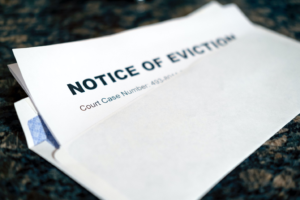
Being a landlord comes with its own set of challenges and responsibilities. While renting out property can be lucrative, it has its fair share of difficulties. One of the most pressing issues landlords face is dealing with problematic tenants.
From late rent payments to property damage and legal disputes, bad tenants can turn a profitable investment into a nightmare. However, you do not need to worry. Landlord Assist is here to help with your problems. We offer tenant eviction, landlord legal services, and more. This blog will delve into the top landlord problems and provide practical solutions for dealing with bad tenants effectively.
1. Late Rent Payments
One of the most common headaches for landlords is tenants who consistently pay their rent late. This can disrupt your cash flow and cause financial strain. To address this issue:
Solution: Clear Rental Terms – Clearly outline the rent payment due dates, late fees, and consequences for non-compliance in the lease agreement. Regularly communicate with tenants to remind them of upcoming payments.
Solution: Incentives and Penalties – Consider offering small incentives for on-time payments, such as a discount on rent. Conversely, enforce late fees to deter delay.

2. Property Damage
Property damage can be a significant concern for landlords, especially when tenants don’t take proper care of the rental unit. To mitigate property damage, you can do the following:
Solution: Thorough Inspection – Conduct a comprehensive move-in and move-out inspection with the tenant. Document the property’s condition using photos and written descriptions to hold tenants accountable for any damage.
Solution: Security Deposit – Collect a security deposit at the beginning of the lease. Clearly state what constitutes acceptable wear and tear versus damages that will result in deductions from the security deposit in the lease agreement.
3. Noise Complaints and Disruptions
Noisy tenants can disturb neighbours and lead to strained relationships within the community. Address this issue by:
Solution: Quiet Hours Clause – Include a clause in the lease agreement that outlines specific quiet hours during which tenants must keep noise levels to a minimum, especially in shared living spaces.
Solution: Open Communication – Establish an open line of communication with your tenants. Encourage them to inform you if they are experiencing noise-related issues with neighbours and address those concerns promptly.
4. Violation of Lease Terms
Tenants who violate the terms of the lease agreement, such as subletting without permission or having unauthorised pets, can create legal complications. To handle lease violations:
Solution: Detailed Lease Agreement – Create a comprehensive lease agreement outlining all terms, restrictions, and requirements. Ensure tenants thoroughly understand the deal before signing.
Solution: Document Everything – Keep written records of all tenant communication regarding lease violations. If a breach occurs, provide written notices outlining the issue and steps to rectify it.

5. Eviction and Legal Disputes
In extreme cases, landlords may face the daunting task of eviction due to non-payment of rent, excessive property damage, or other lease violations. Navigate these situations by:
Solution: Know the Laws – Familiarise yourself with the landlord-tenant laws in your jurisdiction. Understand the legal procedures and requirements for eviction to avoid potential legal pitfalls.
Solution: Professional Mediation – If disputes arise, consider using a professional mediator to help find a mutually agreeable resolution before resorting to eviction.
6. Screening Tenants
One way to prevent many of these problems is by selecting reliable tenants. Implement effective tenant screening procedures:
Solution: Background Checks – Conduct thorough background checks that include credit history, criminal records, and rental history. This can help identify potential red flags.
Solution: Reference Checks – Contact previous landlords to gain insights into a tenant’s rental behaviour and reliability.
7. Unauthorised Changes to the Property
Some tenants may make unauthorised alterations to the property, such as painting walls, installing fixtures, or even making structural changes. To tackle this issue:
Obtain Consent in Writing – Clearly state in the lease agreement that any modifications to the property require written consent from the landlord. This ensures that tenants understand the importance of seeking permission before making changes.
Regular Inspections – Conduct periodic inspections of the property to ensure no unauthorised modifications have been made. If you discover any changes, address them promptly and discuss the consequences with the tenant.

8. Poor Communication
Miscommunication or lack of communication can lead to misunderstandings and frustration for landlords and tenants. To foster better communication:
Set Communication Expectations – From the beginning, establish preferred communication channels with your tenants, such as email or text messages. Make it clear that important matters should be communicated promptly.
Respond Promptly – Be responsive to tenant inquiries and concerns. Timely responses can prevent issues from escalating and demonstrate your commitment to addressing their needs.
Ready to tackle your landlord problems and handle bad tenants effectively? Trust the expertise of Landlord Assist, residential eviction experts in the UK. Explore our comprehensive services, including tenant eviction, tenant tracing, rent collection & debt recovery for landlords, etc.
Get in touch with us!






